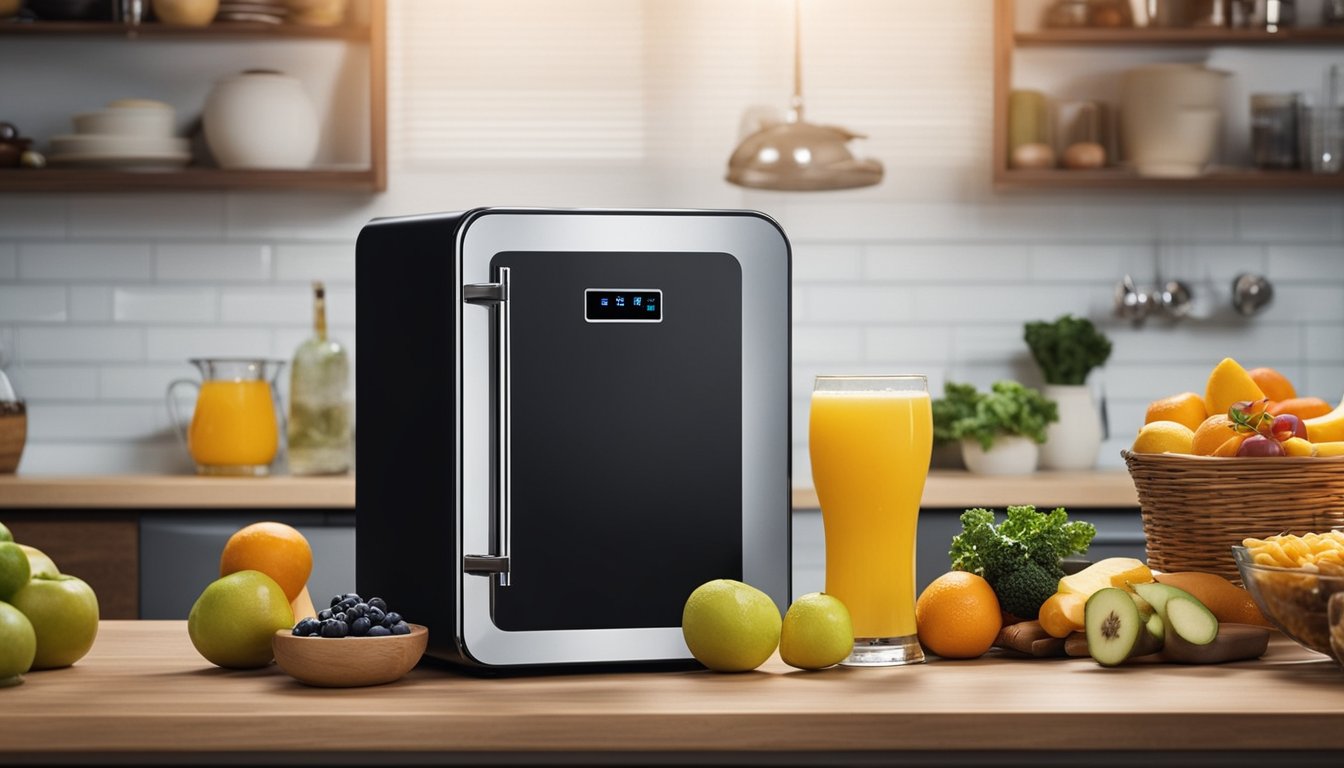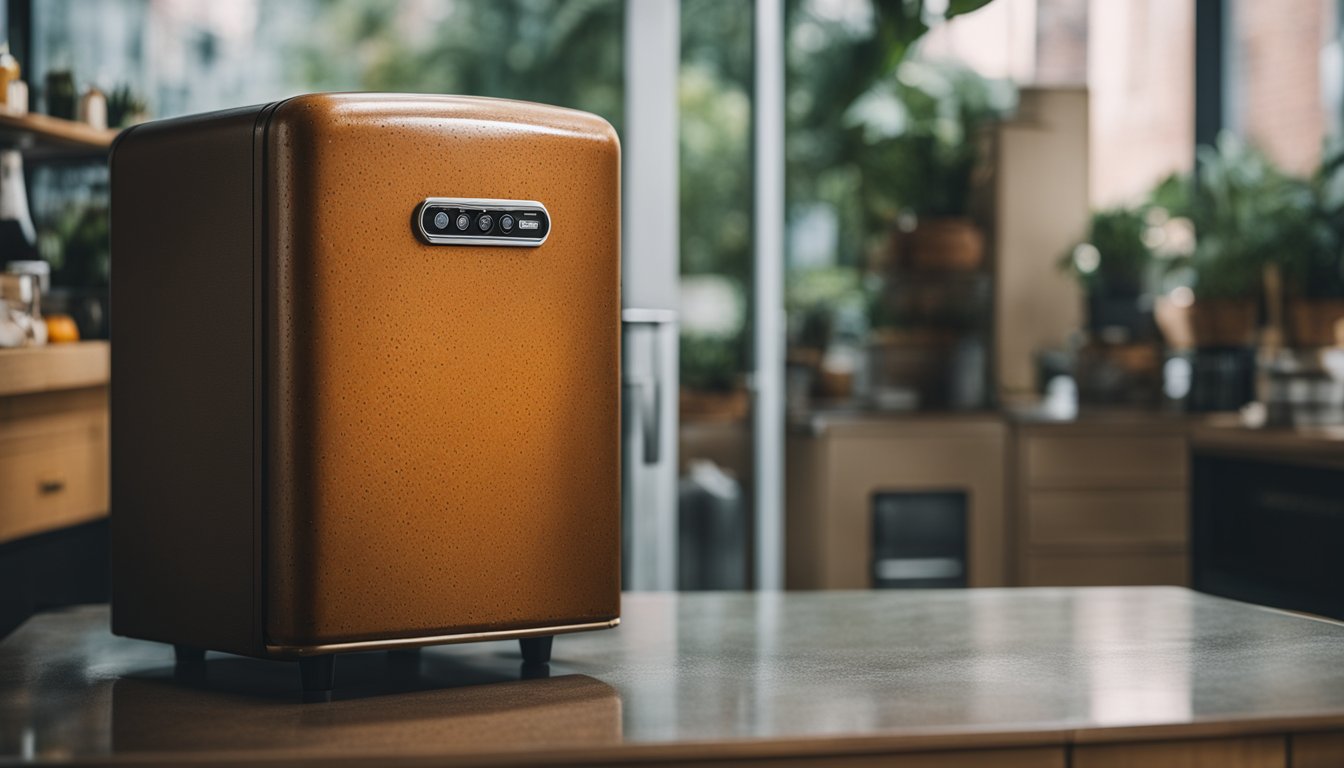How Long Should a Mini Fridge Last: Expected Lifespan and Durability Tips
When considering the purchase of a mini fridge, you might wonder about its expected lifespan. Generally, a mini fridge should serve you well for about 6 to 14 years. Like any appliance, the longevity of a mini fridge hinges on its build quality and how it’s used and maintained. Investing in a mid-range model often strikes a balance between cost and quality, setting you up for years of reliable use.
Your mini fridge’s lifespan can be extended with proper care. Regular cleaning, ensuring adequate ventilation, and avoiding overloading are practical steps you can take to maximize efficiency and longevity. Keeping in mind these factors, your compact refrigerator is a convenient and durable addition to your living space.
Signs of a Failing Mini Fridge

When your mini fridge starts showing signs of wear or malfunction, it’s important to recognize them. These symptoms prove helpful in assessing whether it’s time for a repair or replacement.
Excessive Noise and Overheating
- Excessive Noise: If your mini fridge begins to make unusual sounds such as buzzing, humming, or rattling, it typically indicates a problem.
- Overheating: The back or sides becoming unusually hot to the touch is another red flag.
| Problem | What You Might Hear or Notice |
|---|---|
| Excessive Noise | Rattling, buzzing, or humming noises |
| Overheating | Excessive heat from the sides or back of the mini fridge |
Inconsistent Cooling and Condensation Issues
- Not Cooling Properly: Your fridge should maintain a consistent temperature to safely store food. If the temperature fluctuates, it’s an issue.
- Excessive Condensation: Watch out for droplets building up inside; this could point to a sealing problem.
| Issue | Signs to Look For |
|---|---|
| Inconsistent Cooling | Warm spots, spoiled food, or a lack of proper chill |
| Condensation Issues | Water droplets inside the fridge or around the seal areas |
Frequent Repairs and Age Considerations
- Frequent Repairs: If you find yourself repeatedly fixing issues, this can be a clear sign the fridge is on its last legs.
- More Than 10 Years Old: Mini fridges can last a long time but if yours is over a decade old and causing trouble, it might be time to upgrade.
| Situation | When to Act |
|---|---|
| Frequent Repairs | Multiple repairs needed within a short timeframe |
| Age Considerations | The mini fridge is more than 10 years old |
Maintenance Tips for Longevity
Ensuring your mini fridge lasts as long as possible comes down to routine care. Regular cleaning, ensuring proper ventilation, and keeping an eye on the mechanical components can significantly extend the lifespan of your appliance.
Cleaning and Dusting
Your mini fridge’s performance hinges on keeping it clean, particularly in areas prone to dust buildup. Here’s how you can maintain cleanliness for optimal function:
- Condenser Coils: At least twice a year, unplug your fridge and gently brush any dust or debris from the condenser coils located at the back or beneath the unit.
- Interior: Monthly, wipe down the interior surfaces with a mild detergent, paying attention to spills and stains that can lead to odors or mildew.

Proper Ventilation and Space Management
Adequate airflow is critical for the compressor to function efficiently. Here’s what you need to ensure proper ventilation:
- Clearance: Always keep a few inches of space on all sides of the mini fridge, especially the back where heat is expelled.
- Vent Cleaning: Regularly check and clear any vents of obstructions to maintain good airflow.
Regular Mechanical Checks
Keep an eye on the functioning parts of your mini fridge to nip problems in the bud:
- Door Seals: Inspect and clean the rubber seals around the door to ensure they are not loose or cracked, which can cause cool air to escape.
- Temperature: Monitor temperatures periodically to ensure the fridge is cooling effectively, as fluctuations can indicate mechanical issues.
By integrating these targeted actions into your maintenance routine, you can contribute to an extended and efficient lifespan for your mini fridge.
Impact of Usage and Environment
The longevity of your mini fridge is significantly influenced by how you use it and where it’s placed. Properly managing temperature settings and placement can lead to energy savings and extend the appliance’s operational life.
Temperature Settings and Energy Consumption
Adjusting your mini fridge to the optimal temperature settings avoids unnecessary energy consumption and reduces strain on its components. The ideal range for most mini fridges is between 35-38°F (1.7-3.3°C) to keep food fresh. Lowering the temperature further can increase your energy bill without added benefits to preservation.
- Optimal Temperature Setting: 35-38°F
- Expected Increase in Energy Bill: Setting the fridge colder than needed can increase energy consumption by up to 20%.
Environment and Placement
Your mini fridge’s environment is critical for its efficiency. Keep your fridge away from heat sources and out of direct sunlight to prevent it from working harder than necessary. Maintain a clearance around the unit to allow proper air circulation, and avoid humid areas to reduce the risk of component damage due to moisture.
- Ideal Placement: Away from heat and direct sunlight
- Air Circulation: At least a few inches of clearance on all sides
Usage Patterns and Capacity
How frequently you use your mini fridge and how much you store inside it affects its lifespan. Overloading the fridge or frequent door openings increases the workload and can lead to quicker wear:
- Usage Frequency: Limit door openings to keep a stable internal temperature.
- Capacity: Avoid overfilling; ensure there’s enough space for air circulation inside.
Remember, balancing temperature control, ensuring proper placement, and managing how you use the fridge will help maximize energy efficiency and the appliance’s lifespan.
Choosing the Right Mini Fridge
To ensure you select a durable mini fridge that meets your needs, focus on three pivotal aspects: quality and design features, the reputation of the brand and model, and the coverage provided by warranties and replacement options.
Identifying Quality and Design Features
When assessing mini fridges, review the build quality and the design features that accommodate your space and storage necessities.
Check for adjustable shelves, energy efficiency ratings, and the type of cooling technology used, such as a compressor or thermoelectric cooler. Sturdy materials and a seamless interior design can indicate longevity.
Brand and Model Considerations
Opt for a mini fridge from a reputable brand known for producing reliable appliances. Familiarize yourself with specific models that have positive consumer feedback on performance and durability.
Since brand reputation can be an indicator of quality, consider both new and established brands that align with your budget and feature requirements.
Warranty and Replacement Options
Investigate the warranty length and what it covers, with a preference for longer and more comprehensive coverage. This provides insight into the manufacturer’s confidence in their product.
Additionally, clarify options for replacement parts or repair services in case of malfunction. A solid warranty and accessible replacement options can significantly extend the life of your mini fridge.
Let Us Know How We’re Doing!
Did this expertly prepared resource answer your question?
Do you have another question about home maintenance, home improvement projects, home appliance repair, or something else?
Get more information, send in questions and keep the discussion going by contacting the I’ll Just Fix It Myself company customer service team at at 1-800-928-1490 or Email us at [email protected]
